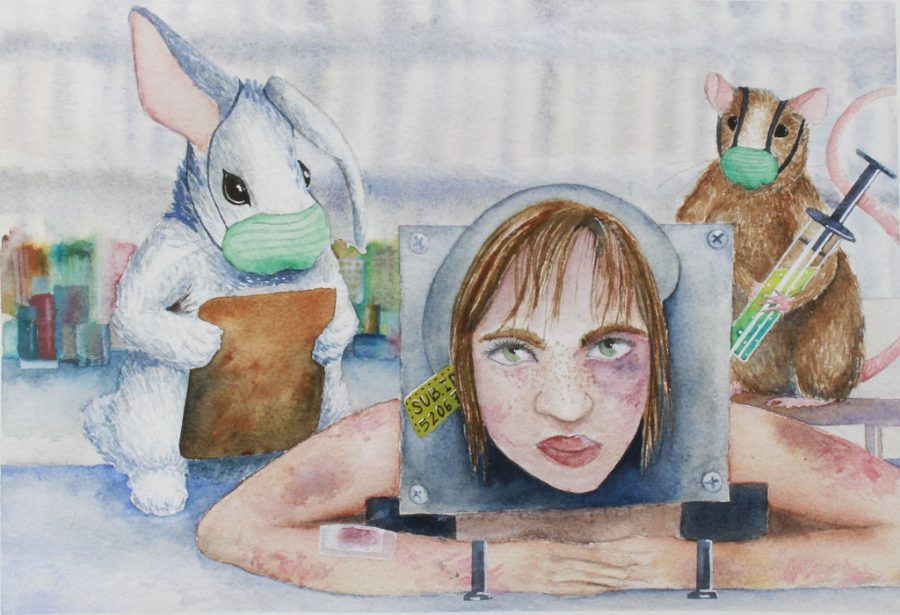Science or cruelty?
We are placing our own economical necessities as a priority to the extinction of important species that play crucial roles in our ecosystem.
April 9, 2021
Whether internally or externally, everyone has shed a tear or two over the incredibly heart-wrenching dog commercials with Sarah McLachlan’s voice winning the sympathy and support of millions.
Or what about the adorable photos of a sleeping puppy and a cuddling kitty; the heartstrings were definitely pulled. But there are many foreign species—crucial to our survival—that are often overlooked when it comes to experimenting.
Since 322 BC, the controversial argument concerning animal testing has been brought to light many times, but the harmful effects of testing were normally swept under the rug, which allowed for the relapse in society’s awareness.
Becuase large corporations and drug pharmaceuticals continue to benefit from experimentation on a variety of animals, animal testing is currently legal in 80% of our world. Even if a company claims to not personally take part in the testing themselves, they often delegate the job to an area where it is not frowned upon, a destructive and immoral process that solely benefits the local consumer while it harms innocent, living creatures.
Since there are many consequences regarding the topic, many have already taken a stance against experimentation. Steve Hoagland is a primary antagonist who believes testing on animals is simply wrong in and of itself.
Hoagland exposes hidden experiments and unauthorized treatments that prove animal suffrage is not only morally wrong, but can lead to a drastic change in our environment.
There is a common misconception that animal testing is solely cosmetic, but there are several methods in which animals are experimented on; for example, in one of his past articles, Hoagland revealed an incident in 1983 “at the University of Pennsylvania in which 150 baboons suffered brain damage as a result of hydraulic equipment smashing against the baboons’ heads to simulate whiplash (such as humans might suffer in a car accident).”
Regulatory testing is only one manner of experimenting, designed to see if medicines, chemicals, (including paints, dyes, inks, petroleum products, solvents, tars and waste materials), cosmetics and other products are safe for use, and that they do their job effectively.
In these experiments, animals are forced to eat or inhale substances or have them rubbed onto their skin or injected into their bodies. The animals are then subjected to further monitoring and testing before almost always being killed so that researchers can look at the effects on their tissues and organs.
Cruelty Free International is successfully putting pressure on companies and regulators to reduce the number of animals used in this type of testing. They are continually encouraging regulators to delete tests that are no longer required from legislation and guidelines and to adopt scientifically validated alternatives.
However, progress remains slow, and much more needs to be done. Thousands of animals continue to be used worldwide for tests that already have available alternatives. For example, there were 123 cruel Draize skin irritation and 40 Draize eye irritation tests carried out on rabbits in the UK alone in 2018, even though there are safer and more validated alternatives out there.
As a society, we must be better at recognizing the true intentions of companies and considering alternatives to certain, harmful products. Not only is our planet suffering from severe wildfires, deforestation and overpopulation, but we are also placing our own economical necessities as a priority to the extinction of important species that play crucial roles in our ecosystem.









